Introduction
I would like to discuss two museums that I am really interested in. Both are located in Los Angeles.
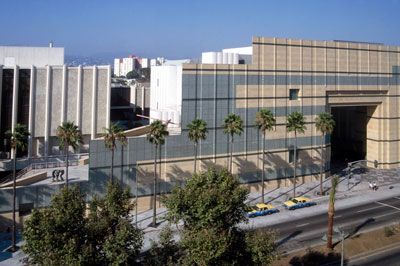
First of all I would like to tell you my impressions about the Los Angeles County Museum of Art generally called LACMA that you can see on the picture, which is located at 5905 Wilshire Boulevard. I would like to say that the Los Angeles County Museum of Art administers the sole pleasures of the group of arts generally called “the visual arts” as a non – medium arranged to some changing exposition and exhibitions and also educational and informative programs.
Main body
The LACMA is accessible for wheelchair visitors. Elevators to the level called “plaza” are situated in the Wilshire Boulevard entrance of the Los Angeles County Museum of Art’s East. Such buildings as: “The Ahmanson Building”, the “Japanese Pavilion”, the “Art of the Americas Building” with its bridge to the “Hammer Building”, the “Bing Theater building”, and the western part of the LACMA are entirely available from the museum’s ground-floor. Also the devices for listening are available there. This museum suggests the scheduling of certain groups tours in order to address their needs. The admission is free after 5 pm; visitors may pay what they actually wish.
This museum represents European masterpieces as well as the contemporary art. It also represents an extensive collection of the American art both from the United States of America and Latin America. This museum also has a great Islamic art collection, Korean art collection, and the marvelous exhibition of Japanese art. It offers a wide range of performances to occupy visitors of all age groups. It is necessary to mention that the LACMA’s exhibitions show exhibit considered the best of world art. They are not framed in time: they present exhibits from the past time to the present time, joining the issues of history, cultures, society, and media. Let’s speak on its current exhibitions.

Here you can see the Pavilion which is related to the exibition named “Phantom Sightings: Art after the Chicano Movement”. It includes such exibits as: paintings and sculptures, drawings and prints of the the late 1960s and early 1970s. Chicano art is a work created by of Mexican Americans.This exhibition shows certain experimental tendencies in the Chicano’s art. Visiotrs are oriented less on painting and narrative polemical affirmation than toward certain conceptual art, maybe some performance or film, on the art based on photo and media, and on hidden artistic interference in urban spaces.
In this context we can say that artists and creative people have often tied their observation to a single item. Looking at the pices at this exibition we can say that the decision of artists to depict one particular object is actually reflective and in a certain way self – revealing. We can say that both associations: personal and aesthetic predetermine the choice of the artist. Loking at this exebition we can say that the object may be recalled from artist’s memory, it may be physically available or it may be imaginery, it might be an “ideal form” in aetist’s understanding. We can state that the object mirrors the solitary area of any artist while he is in the process of work in his studio.
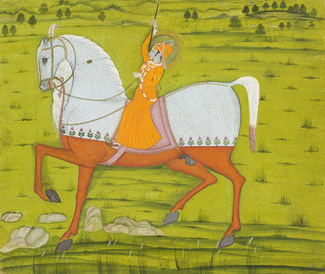
Here you can see the Hindu Painting wich is related to the exhibition called “A Connoisseur’s Delights: Indian Paintings from the Nasli and Alice Heeramaneck Collection”.
There are twenty nine paintings and art workd in this exhibition of the the sixteenth – nineteenth century. These art works were created in the Northern India’s Hindu kingdoms of and in the Himalaian area. Here you can see the best of Rajput and Pahari works, which actually evake the dictinct aesthetic sensetiveness of a discerning visitor. This exhibition is really important for cultural interaction, because a lot of ideas are taken from the life of people around world.
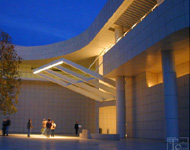
Another Los Angeles museum that I would like to tell you about is the J. Paul Getty Museum generally called The Getty, which is located at 1200 Getty Center Drive. I would like to say that all of this museum’s galleries and museum’s programs are available to people with disabilities. There is also parking for such people that is situated in a nearby area contiguous to the Museum. J. Paul Getty Museum represents visual arts to visitors. The Getty houses famous European art works: decorative arts, drawings and paintings, illuminated manuscripts, sculpture; it also houses photographs of European and American artists.
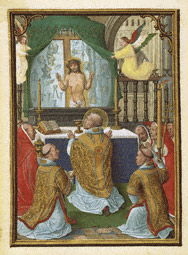
Here we can see the piece from the exhibition called “Imagining Christ”. This exhibition is intended to show the ideas that actually drive religion. It features pictures of Christ from the manuscripts of the Renaissance period. The key idea here id to show the various ways in which Christ was understood by different artists: as the son of God or maybe as God itself, as human being or divine creature, as a judge who can save or verdict humanity.
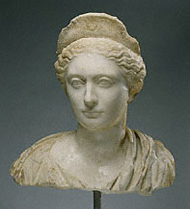
Here we can see the piece “Bust of Sabina” from the exhibition named “Classical Connections: The Enduring Influence of Greek and Roman Art”.
This exhibition is aimed to show the influential impact of ancient art on the later century’s art. We can say that many of the modern ideas about standards of the art actually came from antiquity. This particular installation features main highlights of the collection. Here we can see works from Ancient Greece and Rome made of stone, glass, bronze, gold, silver and other metals.
This exhibition tries to outline the importance of Greek and Roman art.
Conclusion
I can say that I enjoyed all of the exhibitions in both museums. Each of them differs from another one; they are all unique in their own way. I think that we should understand the significance and beauty of each artwork.
Works Cited
Duncan, Carol. Civilizing Rituals: Inside Public Art Museums. London: Routledge, 1995.
Prior, Nick. Museums and Modernity : Art Galleries and the Making of Modern Culture /. New York: Berg, 2002.
Zolberg, Vera L. “American Art Museums: Sanctuary or Free-For-All?.” Social Forces 63.2 (1984): 377-392.